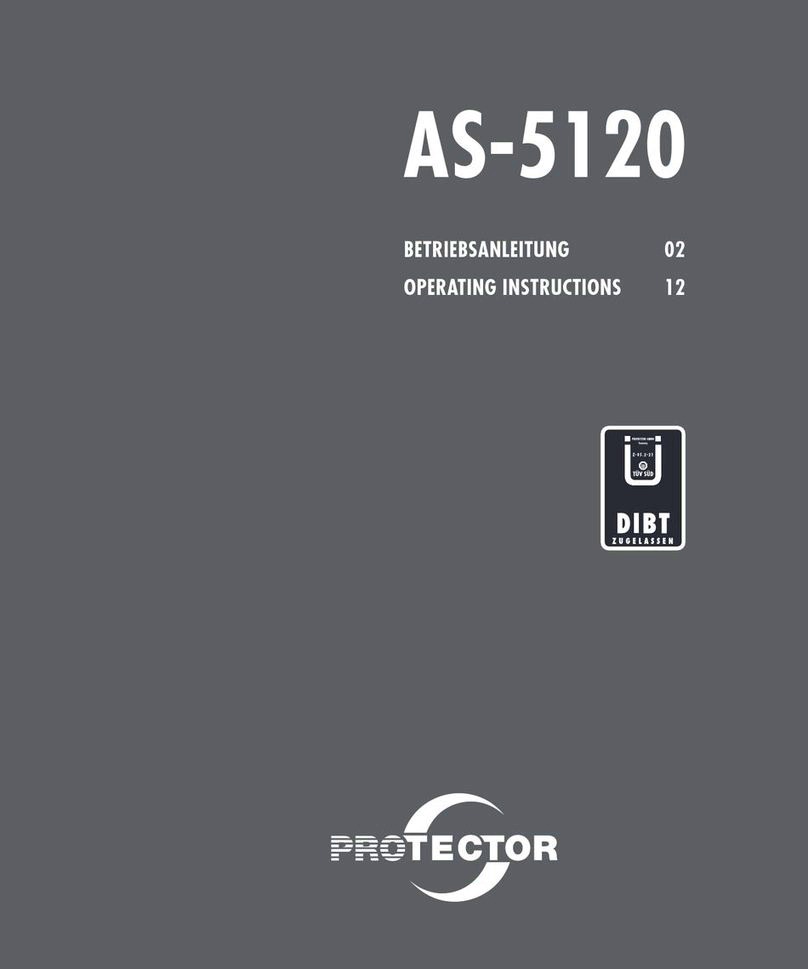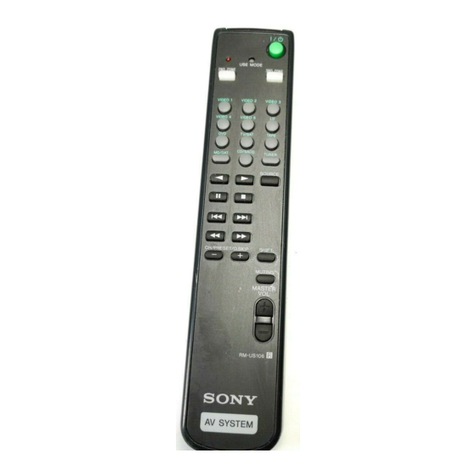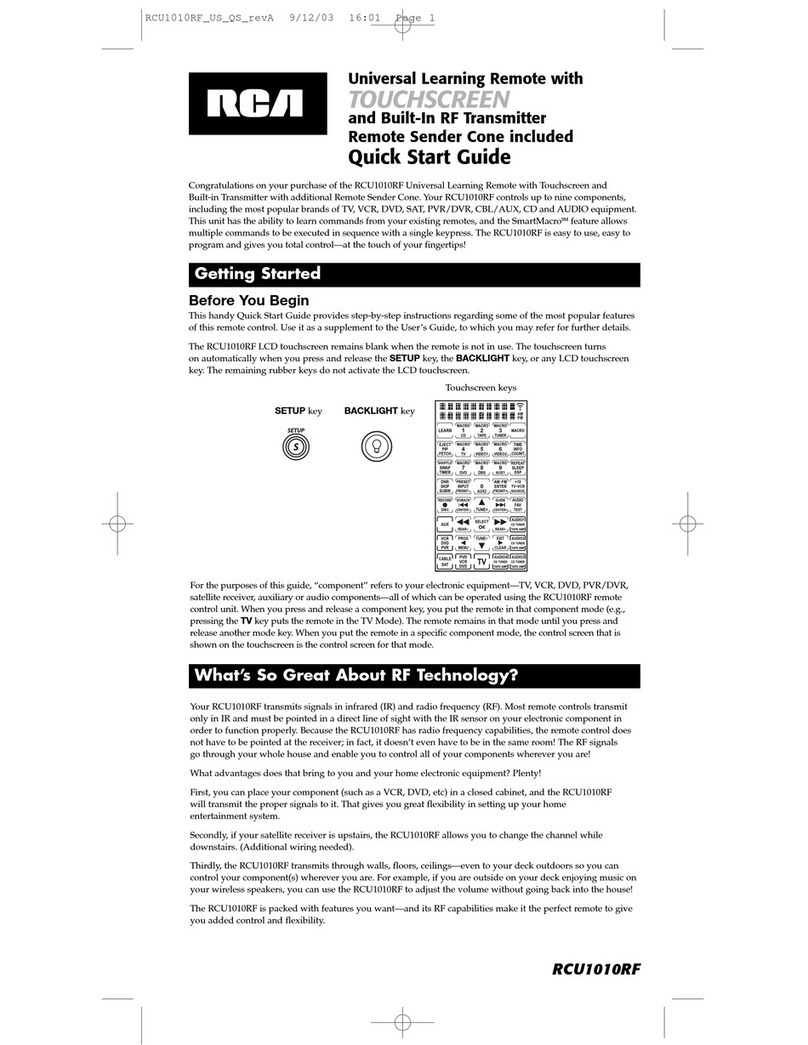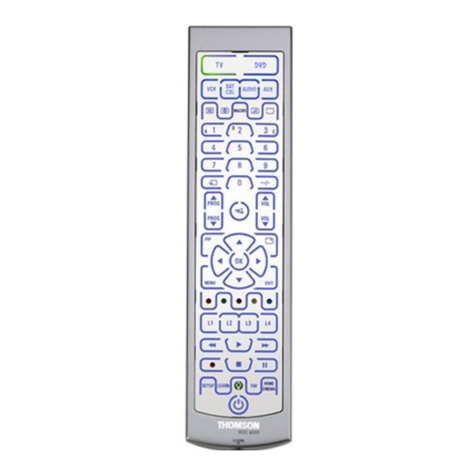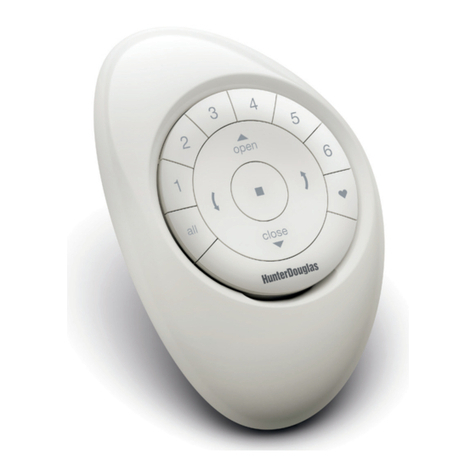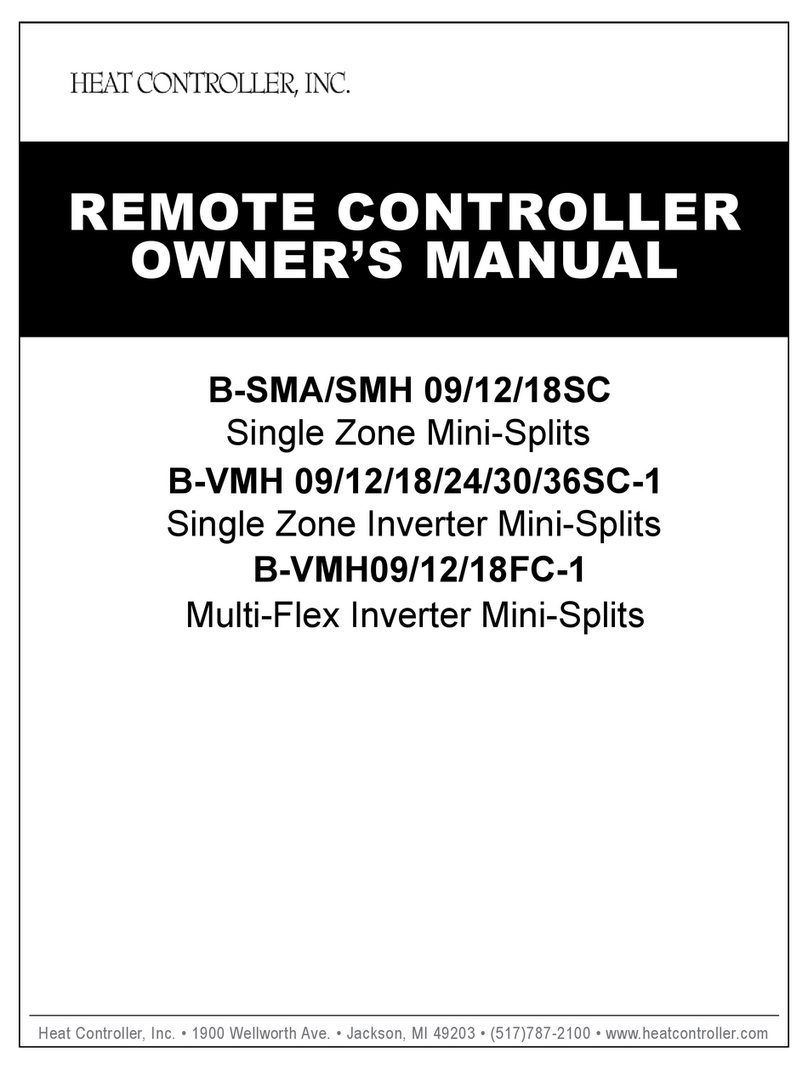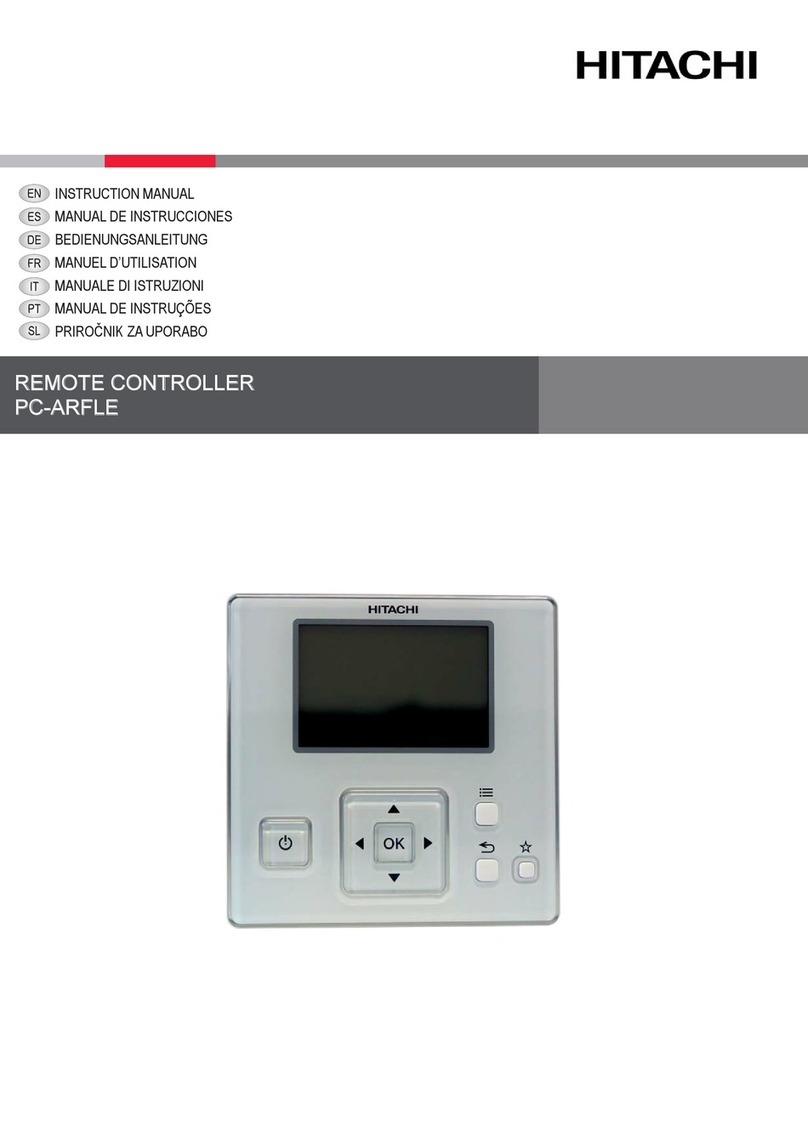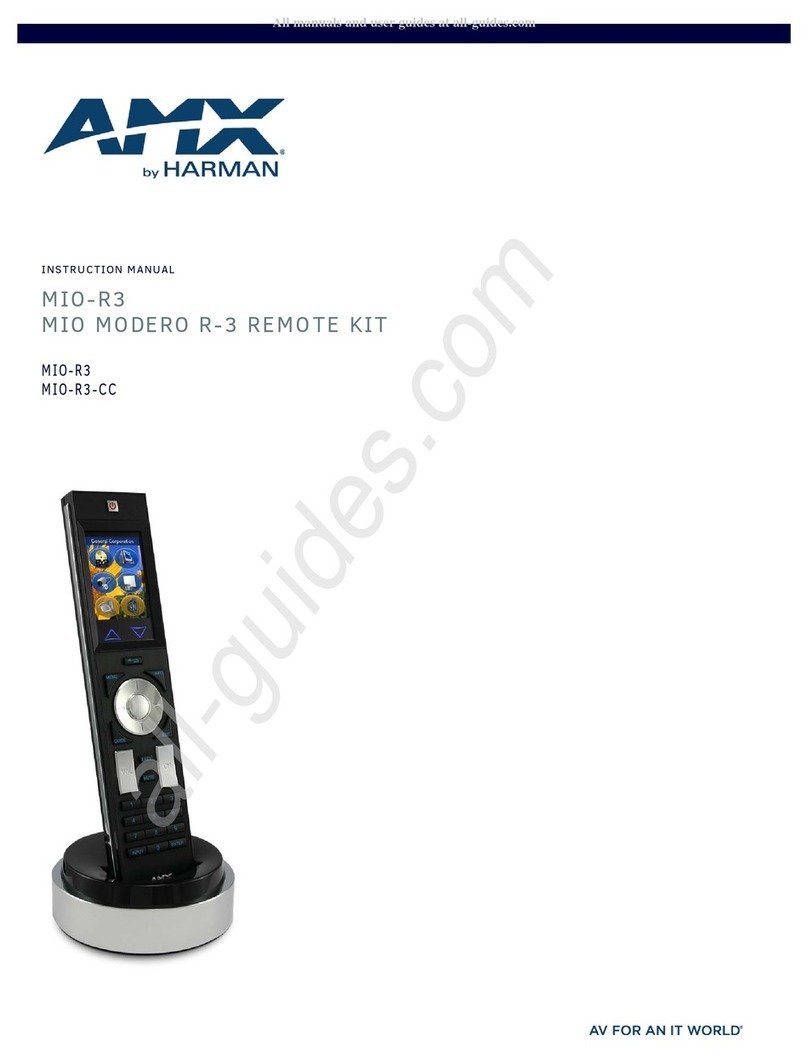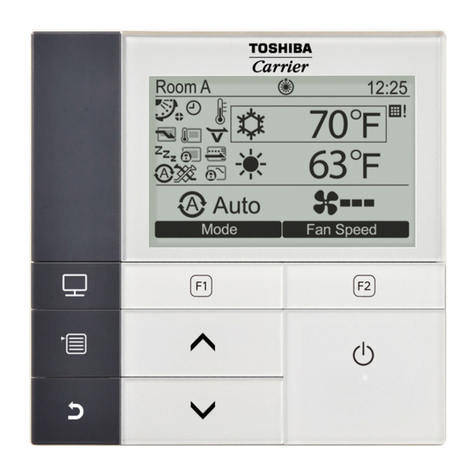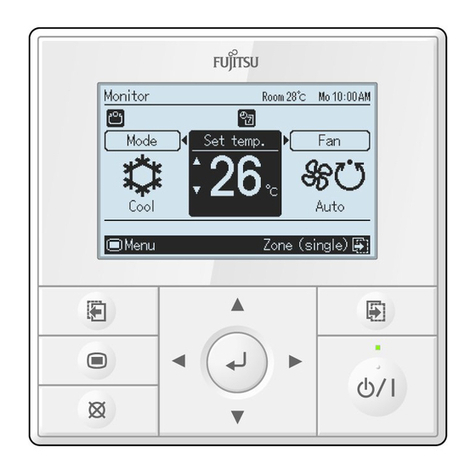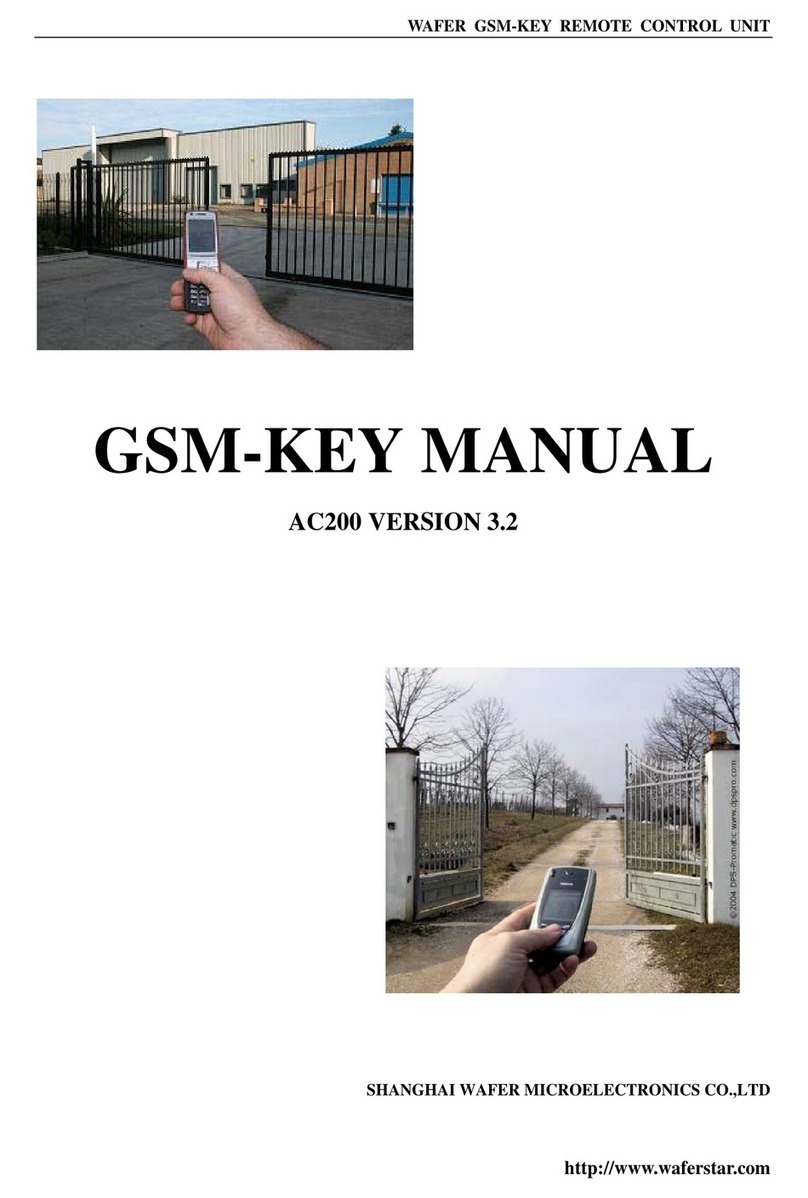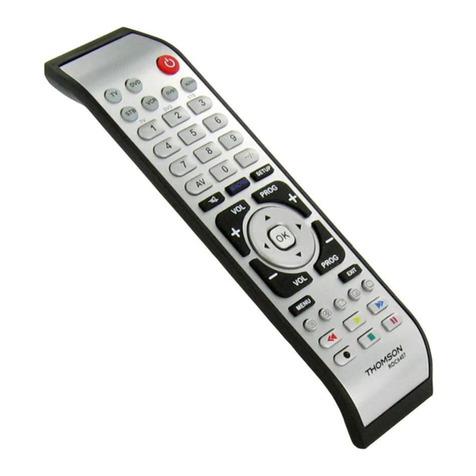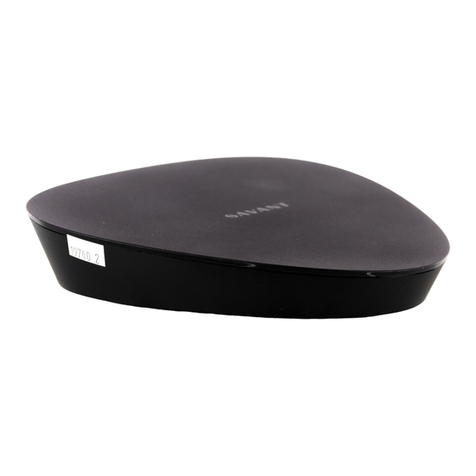Protector AS-5030 User manual

AS-5030
BETRIEBSANLEITUNG
OPERATING INSTRUCTIONS
MODE D’EMPLOI
GEBRUIKSAANWIJZING
AS-5030_I-Manual_150x180_Fin1.indd 1 20.08.13 14:48

AS-5030 | DEUTSCH
2
S
U
4
3
2
5
6
6
7
1
6.1
7
EMPFÄNGER
SENDER FÜR FENSTER
AS-5030_I-Manual_150x180_Fin1.indd 2 20.08.13 14:48

DEUTSCH | AS-5030
3
12
11
13
14
15
H
8
9
16
10
SENDER FÜR OFENROHR
AS-5030_I-Manual_150x180_Fin1.indd 3 20.08.13 14:48

AS-5030 | DEUTSCH
4
über 38°C, schaltet der Empfänger die angeschlossene
Abzugshaube ab. Um diese wieder einzuschalten, öffnen Sie
das/die Fenster mit dem Fensterkontaktschalter. Nachdem
das Abgasrohr wieder auf unter 38°C abgekühlt ist, kann die
Abzugshaube wieder genutzt werden, ohne dass ein Fenster
geöffnet wird.
ACHTUNG!
Der Rollladen muss beim Betrieb der Ablufteinrichtung
geöffnet sein! Ist der Rollladen geschlossen, kann keine
ausreichende Frischluftzufuhr gewährleistet werden!
Legende
1 =Empfänger
2 =Power-LED
3 =Fensterkontakt-LED
4 =Thermosensor-LED
5 =Test-Taste
6 =Fensterkontakt
6.1 =Sende-LED Fensterkontakt
7 =Magnet
8 =Sendemodul für Thermosensor
9 =Sende-LED Thermosensor
10 =Batteriefach
11 =Code-Taste
12 =Anschlussterminal für Thermosensor
13 =Thermosensor
14 =Abgasrohr
15 =Durchführungsloch (4mm)
16 =Befestigungslöcher (2mm)
H =Haltebügel
U =Unterlegteile
S =Umstecksicherung
FUNK-ABLUFTSTEUERUNG MODELL AS-5030
Allgemeines
Bitte lesen Sie diese Anleitung vor Montage und Inbetrieb-
nahme sorgfältig durch, um Montage oder Bedienungsfehler
zu vermeiden.
Die Funk-Abluftsteuerung AS-5030 wird in Verbindung mit
Abluftsystemen, wie z. B. einer Dunstabzugshaube in
Räumen mit einem Zugang zu einer offenen Feuerstelle
genutzt, beispielsweise mit einer Gastherme, einem offenen
Kamin, Kachelofen, Holzofen, Ölofen oder dergleichen.
Bei Inbetriebnahme eines Abluftsystems, z. B. einer
Dunstabzugshaube oder eines Abluftventilators, wird Luft aus
dem Raum nach außen transportiert, wobei ein Unterdruck
im geschlossenen Raum entstehen kann.
Bei der Verbrennung des Brennmaterials in einer offenen
Feuerstelle entstehen geruchslose und unsichtbare
Kohlendioxid- und Kohlenmonoxid-Gase. Diese Gase können
beim Absaugen von Luft mit Hilfe eines Abluftsystems aus
der Feuerstelle in den Raum gelangen und zu lebensgefähr-
lichen Vergiftungen von Personen führen, die sich im Raum
aufhalten.
Funktionsweise der Anlage
Solange der Ofen bzw. das Abgasrohr kalt ist (unter 38°C),
wird die an den Empfänger angeschlossene Abzugshaube
mit Strom versorgt und funktioniert wie gewohnt. Steigt die
Temperatur im Inneren des Abgasrohres auf eine Temperatur
AS-5030_I-Manual_150x180_Fin1.indd 4 20.08.13 14:48

DEUTSCH | AS-5030
5
MONTAGE
Empfohlen wird die Montage durch den Installateur und
Heizungsbauer oder Elektroinstallateur.
Die fachgerechte Montage gewährleistet den sicheren
dauerhaften Betrieb.
Eine Funktionsprüfung kann vom Bezirksschornsteinfeger
durchgeführt werden.
Montageanleitung Fensterkontakt (6)
Mindestöffnung des Fensters
Diese richtet sich nach:
a) Der Leistung des Abluftgerätes in m³/h
b) Nach der Größe des zu öffnenden Fensters in m².
c) Nach der Größe des Öffnungsspalts am Fenster in cm
(siehe Tabelle 1)
In den meisten Küchen sind rechteckige Kipp-Schwenkfenster
eingebaut.
Sollte es sich bei dem Fenster um ein z.B. rundes Format
handeln, fragen Sie bitte den Installateur und Heizungs-
bauer oder Elektroinstallateur nach der Berechnung der
Mindestöffnung.
Die erforderliche Mindestöffnung des rechteckigen Fensters
ist als Beispiel in der Tabelle für Kipp- Schwenkstellung
ersichtlich.
1) Ermitteln Sie die Abluftluftleistung Ihres Abluftgerätes in
m³/h. Sie finden die Abluftluftleistung auf dem Typen-
schild oder in der Betriebsanleitung Ihres Abluftgerätes
(z. B. Dunstabzugshaube).
2) Messen Sie die innere Breite und Höhe des Fensters und
errechnen Sie die Fenstergröße in m².
(Breite x Höhe = m²; z. B. 0,8 m x 1,0 m = 0,8m²) =
Fenstergröße
Berechnungstabelle
zur Bestimmung der
Mindestspaltöffnung
Ihres Fensters
AS-5030_I-Manual_150x180_Fin1.indd 5 20.08.13 14:48

AS-5030 | DEUTSCH
6
Fenster links. Der Befestigungspunkt muss so gewählt wer-
den, dass ein Signal “Fenster geöffnet” erst dann gegeben
wird, wenn das laut Tabelle notwendige Spaltöffnungsmaß
erreicht ist. Beim Schwenken muss sich der Magnet immer
im Bereich unter 7mm am Sender befinden, so dass der
Sender das Fenster immer als geschlossen erkennt! Sie
sollten aber darauf achten, dass Sender und Magnet sich
nicht berühren können, wenn das Fenster geschwenkt wird.
Montage für Schwenk-Stellung
Sensor und Magnet müssen auf der Seite angebracht wer-
den, an der sich das Kipp-Scharnier befindet (meist unten).
Der Befestigungspunkt muss so gewählt werden, dass ein
Signal “Fenster geöffnet” erst dann gegeben wird, wenn das
laut Tabelle notwendige Spaltöffnungsmaß erreicht ist. Beim
Kippen muss sich der Magnet immer im Bereich unter 7mm
am Sender befinden, so dass der Sender das Fenster immer
als geschlossen erkennt! Sie sollten aber darauf achten, dass
Sender und Magnet sich nicht berühren können, wenn das
Fenster gekippt wird.
1) Magnet an der vorgesehenen Stelle mit dem beigelegten
doppelseitigen Klebepad fixieren.
2) Fensterkontakt am Fenster mit dem beigelegten
doppelseitigen Klebepad fixieren.
ACHTUNG: Der Abstand zwischen Sender und dem
Magneten darf 7 mm nicht überschreiten!
3) Nachdem alle Funktionen erfolgreich getestet wurden,
müssen Sender und Magnet am Fenster/Fensterahmen
verschraubt werden. Dazu befindet sich ein vorbereitetes
Loch im Batteriefach des Senders und im unteren Teil
des Magnetgehäuses. Sender und Magnet können
dadurch am Fenster/Fensterrahmen festgeschraubt
3) Bestimmen Sie anhand der Tabelle aus der Abluftluft-
leistung und der Fenstergröße das Spalt-Öffnungsmaß
(Mindestspaltöffnung Ihres Fensters).
4) Messen Sie in der Kippstellung die obere innere Fenster-
Spaltgröße in cm. Die Spaltgröße Ihres Fensters darf das
ermittelte Spalt-Öffnungsmaß nicht unterschreiten! Eine
größere Spalt- oder Fensteröffnung ist von Vorteil.
5) Unterschreitet die Spaltgröße des Fensters den zuläs-
sigen Wert für das Spalt-Öffnungsmaß entsprechend
der Tabelle, so kann das Fenster eventuell nur in
der Schwenkposition das erforderliche Öffnungsmaß
erreichen. Auch in der Schwenkposition muss eine
Mindestspaltgröße erreicht werden. Der Fensterkontakt
muss so angebracht sein, dass die Mindestspaltgröße
gesichert ist. Wir empfehlen, die Mindestspaltgröße mit
Hilfe eines Abstandhalters zu fixieren.
Vorbereitung
Sender (6) und Magnet (7) an dem Fensterrahmen und
dem Fensterflügel so montieren, dass der allseitige Abstand
von Magnet und Sender im geschlossenen Zustand des Fen-
sters kleiner 7 mm ist. Zum Anpassen hierzu die beigefügten
Unterlegteile verwenden (U).
Wir empfehlen, bis zur endgültigen Befestigung Sender und
Magnet mit doppelseitigem Klebeband zu fixieren und erst
zum Schluss alles zu verschrauben.
Montage für Kipp-Stellung
Sender und Magnet müssen auf der Anschlagseite des Fen-
sters angebracht werden. D.h. Bei einem rechts angeschla-
genem Fenster rechts, bzw. bei einem links angeschlagenem
AS-5030_I-Manual_150x180_Fin1.indd 6 20.08.13 14:48

DEUTSCH | AS-5030
7
Thermosensor bis er auf dem Abgasrohr aufliegt und
markieren Sie dann die beiden Befestigungslöcher des
Haltebügels mit einem geeignetem Stift, ziehen sie
dann den Thermosensor und den Haltebügel wieder aus
dem Abgasrohr heraus.
5) Bohren Sie an den zwei zuvor markierten Befestigungs-
löchern am Abgasrohr Löcher mit 2mm Durchmesser.
Hinweis: Bei doppelwandigem Abgasrohr bohren Sie
vorsichtig nur durch das äußere Rohr!
6) Befestigen Sie den Haltebügel am Abgasrohr indem Sie
ihn mit den zwei mitgelieferten Blechschrauben und den
beiden soeben gebohrten Löchern verschrauben.
7) Führen Sie jetzt den Thermosensor durch den Haltebügel
bis zum Anschlag und fixieren Sie in am Haltebügel mit
der seitlichen Schraube. Ziehen Sie sie nicht zu fest an,
um den Thermosensor nicht zu beschädigen.
8) Verlegen Sie die Leitung des Thermosensors bis zum
Sendemodul des Thermosensors.
9) Schließen Sie die Leitung des Thermosensors an das Sen-
demodul an, die rot markierte Leitung an die Schraube
‚Rot/Red’, die weiß markierte Leitung an die Schraube
‚Weiß/White’.
10) Auf der Rückseite des Sendemoduls befindet sich eine
Wandhalterung. Diese kann nach unten geschoben und
aus dem Sender entnommen werden.
11) Suchen Sie eine geeignete Stelle zur Montage des
Senders und verschrauben Sie die Wandhalterung des
Senders an dem Montageort. Das Sendemodul sollte
einen Mindestabstand von 50cm zum Abgasrohr haben,
damit das Sendemodul nicht durch Hitze zerstört werden
kann. Des Weiteren sollte das Sendemodul nicht hinter
einer Verkleidung montiert werden, hierdurch kann die
Reichweite eingeschränkt werden.
werden. Hierdurch wird ein ungewolltes herunterfallen
von Sender und Magnet verhindert!
Funktionsprüfung der Fensterkipp-
oder Schwenkposition
• Das Fenster langsam in die Kippstellung oder Schwenk-
stellung bringen, die Sende-LED (6.1) am Sender
leuchtet noch vor der maximalen Kipp- oder Schwenkstel-
lung kurz grün auf.
• Fenster schließen, Sende-LED (6.1) leuchtet kurz rot auf.
• Kontrollieren Sie zum Abschluss noch einmal die
Spaltöffnungen mit dem laut Tabelle 1 festgestellten
Minimalwert.
Montageanleitung Thermosensor (13)
Hinweis: Um Verbrennungen an Ihrer Haut zu vermeiden,
sollte der Ofen aus und abgekühlt sein!
Der Thermosensor wird durch ein Loch in das Abgasrohr Ihres
Ofens geführt und mittels beigelegten Haltebügels mit dem
Ofenrohr verschraubt. Der Sender sollte nicht durch eine
Verkleidung verdeckt werden, da hierdurch die Funksignale
beeinträchtigt und die Reichweite verkürzt werden könnte.
1) Bohren Sie an geeigneter Stelle in das Abgasrohr Ihres
Ofens ein 4mm Loch für den Thermosensor. Achten
Sie darauf, dass das Loch so positioniert ist, dass der
Thermosensor nach der Montage möglichst nicht zu
sehen ist.
2) Schieben Sie den Haltebügel über den Thermosensor,
ziehen Sie Schraube zur Fixierung des Thermosensors
noch nicht an.
3) Stecken Sie den Thermosensor in das dafür gebohrte
Loch im Abgasrohr und schieben Sie ihn bis zum
Anschlag hinein.
4) Verschieben Sie den Befestigungsbügel auf dem
AS-5030_I-Manual_150x180_Fin1.indd 7 20.08.13 14:48

AS-5030 | DEUTSCH
8
den Magneten an den Fensterkontakt. Die LED (6.1)
am Fensterkontakt, sowie die LED (Fensterkontakt) am
Empfänger sollten kurz blinken.
4) Beenden Sie den Lernvorgang, indem Sie einmal kurz
auf die Test-Taste des Empfängers drücken.
Sobald der Magnet weiter als 7mm vom Fensterkontakt
entfernt ist, sollte der Empfänger den angeschlossenen
Verbraucher mit Strom versorgen. Wird der Magnet dann
wieder näher an den Fensterkontakt gebracht, sollte der
Verbraucher wieder Stromlos sein. Ist dies nicht der Fall,
wiederholen Sie den Vorgang.
Hinweis: Es können bis zu drei Fensterkontakte an einem
Empfänger angelernt werden. Die Fensterkontakte sind
dann „UND-verknüpft“, d.h. jeder Sender muss den
Status „Fenster geöffnet“ haben, bevor der Empfänger
den Strom durchschaltet. Dies ist z.B. hilfreich, wenn
sich hinter Ihrem überwachten Fenster ein Wintergarten
befindet oder wenn Sie die Kipp- und die Schwenkfunk-
tion benutzen wollen.
Führen Sie die Schritte 1-4 für jeden weiteren
Fensterkontakt durch.
Thermosensor
1) Entnehmen Sie die Batterien aus dem Sendemodul (8),
falls diese bereits eingesetzt wurden.
2) Stecken Sie den Empfänger mit eingesetztem Verbrau-
cher in eine Steckdose.
3) Drücken und halten Sie die Test-Taste (5) am Empfänger
bis die beiden LEDs (3 und 4) dauerhaft rot leuchten.
Lassen Sie die Test-Taste dann los.
4) Setzen Sie jetzt die Batterien wieder in das Sendemodul
ein. Achten Sie dabei auf die Polung der Batterien.
5) Die LED (4) blinkt einmal rot.
Montageanleitung Empfänger (1)
1) Den Netzstecker des Abluftgerätes in die Steckdose am
Steuergerät einstecken.
2) Die passende Umstecksicherung (S) über den Stecker
des Abluftgerätes aufsetzen und mit dem Empfänger
verschrauben. Sollte sich die Umstecksicherung nicht
mit eingesetztem Stecker montieren lassen, kann es in
Ausnahmefällen erforderlich sein, die Kanten der Um-
stecksicherung etwas anzupassen, oder einen anderen
Stecker durch eine Elektrofachkraft anbringen zu lassen.
3) AS-5030 in die Netzsteckdose (Stromquelle) einstecken.
Die Power-LED leuchtet.
Hinweis: Der Empfänger sollte nicht hinter einer Metall-
Verkleidung montiert werden, hierdurch kann die
Reichweite eingeschränkt werden.
INBETRIEBNAHME
Kodierung
Bei der ersten Inbetriebnahme muss die Kodierung gelernt
werden, gehen Sie dazu wie folgt vor:
Hinweis: Bitte lernen Sie zuerst den/die Fensterkontakt/e
an und danach den Thermosensor.
Fensterkontakt
1) Stecken Sie den Empfänger (1) mit eingestecktem
Verbraucher in eine Steckdose, wenn nicht bereits
geschehen.
2) Drücken und halten Sie die Test-Taste (5) am Empfänger
bis die beiden LEDs (3 und 4) dauerhaft rot leuchten.
Lassen Sie die Test-Taste dann los.
3) Setzen Sie die Batterie vom Typ CR123A in den
Fensterkontakt ein (Polarität beachten) und halten Sie
AS-5030_I-Manual_150x180_Fin1.indd 8 20.08.13 14:48

DEUTSCH | AS-5030
9
CE Konformität
Wir bestätigen die Konformität der Geräte nach der europä-
ischen Richtlinie 2004/108/EG zur elektromagnetischen
Verträglichkeit sowie zu der Niederspannungsrichtlinie
2006/95/EC. Die Funkzulassung wird bescheinigt nach der
EC R&TTE Direktive 1999/5/EC.
TECHNISCHE DATEN
Netzspannung (Empfänger) 230 V ~ , 50/60 Hz, ca. 2 W
Schaltleistung 1000 W, 4,3A, bei cos Phi=1
Funk-Reichweite bis 20 m
Funk-Frequenz 868 MHz
Schutzklasse IP 20, nur für trockene Räume
Batterie (Fensterkontakt) 1 x Typ CR 123A
Batterien (Sendemodul 3 x Größe AA/Mignon/LR6
Thermosensor) Alkaline
Im Rahmen unserer Produktpflege und Geräteoptimierung
sind technische Änderungen auch kurzfristig ohne Vorankün-
digung möglich.
SICHERHEITSHINWEISE
Keine eigenen Reparaturversuche durchführen!
Bei Schäden, die durch Nichtbeachten dieser Bedienungsan-
leitung verursacht werden, erlischt der Garantieanspruch. Für
Folgeschäden übernehmen wir keine Haftung! Bei Sach- oder
Personenschäden, die durch unsachgemäße Handhabung
oder Nichtbeachten der Sicherheitshinweise verursacht
werden, übernehmen wir keine Haftung. In solchen Fällen
erlischt jeder Garantieanspruch!
6) Drücken Sie einmal kurz auf die Test-Taste am Empfän-
ger um den Lernmodus zu verlassen.
7) Warten Sie jetzt ca. 5 Minuten oder drücken Sie die
Code-Taste (11) am Sender für ca. 2 Sekunden.
Jetzt ist das Gerät funktionsbereit.
Kodierung löschen / Werkseinstellung
Sollte bei der Kodierung etwas nicht korrekt funktioniert
haben oder einer der Sender ersetzt werden müssen, muss
der Empfänger erst zurückgesetzt werden. Halten Sie
dazu die Test-Taste (5) am Empfänger für ca. 6 Sekunden
gedrückt. Nach ca. 2 Sekunden fangen die LEDs (3 und 4)
an, rot zu leuchten. 4 Sekunden später blinken beide LEDs
kurz auf. Danach kann die Test-Taste losgelassen werden und
der Empfänger befindet sich wieder im Auslieferungszustand,
d.h. alle Sender müssen erneut angelernt werden.
Test-Funktion
Mit der Test-Taste am Empfänger kann die Funktion des
Relais im Empfänger geprüft werden. Wird die Test-Taste
kurz gedrückt, schaltet das Relais für ca. 1 Sekunde ein und
es sind 3 Pieptöne zu hören. (Klack-Piep-Klack-Pieppiep).
Diese Funktion steht nur zur Verfügung, wenn das Fenster
geschlossen und der Ofen in Betrieb ist.
CE Hinweise
Unter Einwirkung von starken elektrischen, magnetischen
oder hochfrequenten Feldern (Entladungen, Mobiltelefonen,
Funkanlagen, Handys, Mikrowellen) kann es zu Funktionsbe-
einträchtigungen der Geräte (des Gerätes) kommen.
AS-5030_I-Manual_150x180_Fin1.indd 9 20.08.13 14:48

AS-5030 | DEUTSCH
10
in üblicher Weise benutzt wird und regelmäßig instand ge-
halten wird. Die Verpflichtungen dieser Garantie werden auf
die Reparatur oder den Wiedereinbau irgendeines Teils des
Gerätes begrenzt und gelten nur unter der Bedingung, dass
keine unbefugten Veränderungen oder versuchte Reparaturen
vorgenommen wurden. Ihre gesetzlichen Rechte als Kunde
werden in keiner Weise durch diese Garantie beeinträchtigt.
Bitte beachten Sie!
Es besteht kein Anspruch auf Garantie in u. a. folgenden
Fällen:
•Bedienungsfehler
•leere Batterien oder defekte Akkus
•falsche Codierung/Kanalwahl
•Störungen durch andere Funkanlagen (z.B. Handybetrieb)
•Fremdeingriffe/-wirkungen
•Mechanische Beschädigungen
•Feuchtigkeitsschäden
•Kein Garantie-Nachweis (Kaufbeleg)
Haftungsbeschränkung:
Der Hersteller ist nicht für den Verlust oder die Beschädigung
irgendwelcher Art einschließlich der beiläufigen oder Folge-
schäden haftbar, die direkt oder indirekt aus der Störung
dieses Produktes resultieren.
DE
Diese Bedienungsanleitung ist eine Publikation der Protector
GmbH, An den Kolonaten 37, 26160 Bad Zwischenahn
Diese Bedienungsanleitung entspricht dem technischen
Stand bei Drucklegung. Änderung in Technik und Ausstattung
vorbehalten.
Verwenden Sie dieses Produkt nicht in Krankenhäusern
oder sonstigen medizinischen Einrichtungen. Obwohl dieses
System nur relativ schwache Funksignale aussendet, könnten
diese dort zu Funktionsstörungen von lebenserhaltenden
Systemen führen. Gleiches gilt möglicherweise in anderen
Bereichen.
Aus Sicherheits- und Zulassungsgründen (CE) ist das
eigenmächtige Umbauen und/oder Verändern des Produkts
nicht gestattet.
Zerlegen Sie das Produkt nicht! Es besteht die
Gefahr eines lebensgefährlichen elektrischen
Schlages!
Lassen Sie das Verpackungsmaterial nicht achtlos liegen,
Plastikfolien/-tüten, Styroporteile, etc., könnten für Kinder
zu einem gefährlichen Spielzeug werden.
Das Gerät ist nur für trockene Innenräume geeignet (keine
Badezimmer o.ä. Feuchträume). Vermeiden Sie das Feucht-
oder Nasswerden des Geräts.
Wenden Sie sich an eine Fachkraft, wenn Sie Zweifel über
die Arbeitsweise, die Sicherheit oder den Anschluss des
Geräts haben. Gehen Sie vorsichtig mit dem Produkt um
- durch Stöße, Schläge oder dem Fall aus bereits geringer
Höhe wird es beschädigt.
2 JAHRE BESCHRÄNKTE GARANTIE
Es wird für die Dauer von 2 Jahren ab Kaufdatum gewährlei-
stet, dass dieses Produkt frei von Defekten in den Materialien
und in der Ausführung ist. Dies trifft nur zu, wenn das Gerät
AS-5030_I-Manual_150x180_Fin1.indd 10 20.08.13 14:48

DEUTSCH | AS-5030
11
AS-5030_I-Manual_150x180_Fin1.indd 11 20.08.13 14:48

AS-5030 | ENGLISH
12
S
U
4
3
2
5
6
6
7
1
6.1
7
RECEIVER
TRANSMITTER WINDOW
AS-5030_I-Manual_150x180_Fin1.indd 12 20.08.13 14:48

ENGLISH | AS-5030
13
12
11
13
14
15
H
8
9
16
10
TRANSMITTER
AS-5030_I-Manual_150x180_Fin1.indd 13 20.08.13 14:48

AS-5030 | ENGLISH
14
receiver turns off the connected extractor hood. To turn it
on, open the window(s) with the window contact switch.
After the exhaust pipe is cooled to below 38°C again, the
extractor hood can be used again without a window being
opened.
CAUTION!
The shutters must be open when the extractor hood is in
operation! If the shutters are closed, a sufficient fresh air
supply cannot be guaranteed!
Key
1 =Receiver
2 =Power LED
3 =Window contact LED
4 =Thermal sensor LED
5 =Test button
6 =Window contact
6.1 =Window contact transmitter LED
7 =Magnet
8 =Transmitter module for the thermal sensor
9 =Thermal sensor transmitter LED
10 =Battery compartment
11 =Programming button
12 =Connection terminal for the thermal sensor
13 =Thermal sensor
14 =Exhaust gas pipe
15 =Through hole (4 mm)
16 =Mounting holes (2 mm)
H =Mounting bracket
U =Washers
S =Tamper-proof plug guard
(safeguard against unplugging this device)
WIRELESS EXHAUST AIR CONTROL SYSTEM
MODEL AS-5030
General
Please read these instructions carefully before installing and
operating the device to avoid installation or operating errors.
The wireless exhaust air control system AS-5030 is used in
conjunction with exhaust air systems, such as an extractor
hood in rooms with access to an open fire, for example with
a gas-fuelled heater, an open fireplace, tiled stove, wood-
burning stove, oil-burning stove etc.
When operating an exhaust air system, e.g. an extractor
hood or exhaust fan, air is transported out of the room to
the outside, which can cause negative pressure to form in
the closed space.
The combustion of fuel in an open hearth creates odourless
and invisible carbon dioxide and carbon monoxide gases.
These gases can be sucked into the room from the hearth by
way of an exhaust air system and lead to the fatal poisoning
of anyone spending time in the room.
How the system works
Provided that the stove/exhaust pipe is cold (below 38°C),
the extractor hood connected to the receiver is supplied with
power and functions as usual. If the temperature inside the
exhaust pipe increases to a temperature above 38°C, the
AS-5030_I-Manual_150x180_Fin1.indd 14 20.08.13 14:48

ENGLISH | AS-5030
15
installation and heating engineers or electrician to calculate
the minimum opening.
The minimum opening of rectangular windows is shown as
an example in the table for the tilt and pivot position.
Calculation table to determine the minimum opening of your
window
1) Determine the extraction power of your exhaust air
extraction device unit in m³/h. You can find the exhaust
air extraction power on the identification plate or in the
operating instructions of your exhaust air device (e.g.
extractor hood).
2) Measure the inner width and height of the window and
calculate the window size in m².
(width x height = m²; e.g. 0.8 m x 1.0 m = 0.8 m²) =
window size
INSTALLATION
We recommend the system is installed by installation and
heating engineers or electricians.
Professional installation ensures safe long-term operation.
A functional test can be carried out by the district chimney
sweep.
Assembly instructions for window contact (6)
Minimum window opening
These are based on:
a) The power of the exhaust air device in m³/h
b) The size of the window to be opened in m²
c) The size of the window opening in cm (see table 1)
Most kitchens have rectangular tilt and pivot windows.
If your window is round for example, please ask the
AS-5030_I-Manual_150x180_Fin1.indd 15 20.08.13 14:48

AS-5030 | ENGLISH
16
The mounting point should be selected so that the „open
window“ signal is only given if the necessary opening size
is reached in accordance with the table. When pivoting the
window, the magnet must always be less than 7 mm from
the transmitter so that the transmitter always recognises the
window as being closed! You should however make sure that
the transmitter and magnet cannot touch when the window
is pivoted.
Installation for pivoted position
The sensor and magnet must be mounted on the side where
the tilt hinge is (usually below). The mounting point should
be selected so that the „open window“ signal is only given if
the necessary opening size is reached in accordance with the
table. When tilting the window, the magnet must always be
less than 7 mm from the transmitter so that the transmitter
always recognises the window as being closed! You should
however make sure that the transmitter and magnet cannot
touch when the window is tilted.
1) Fix the magnet in place at the designated location using
the double-sided adhesive pad supplied.
2) Fix the window contact onto the window with the
double-sided adhesive pad supplied.
WARNING: The distance between the transmitter and
the magnet must not exceed 7 mm!
3) Once all functions have been tested successfully,
the transmitter and magnet must be screwed to the
window/window frame. For this purpose, there is a hole
prepared in the battery compartment of the transmitter
and in the lower part of the magnet housing. The
transmitter and magnet can therefore be screwed to the
window/window frame. This prevents the transmitter
and magnet from accidentally falling off!
3) Using the table, work out the opening size (minimum
opening for your window) from the extraction power and
window size.
4) While the window is in the titled position, measure the
upper inner gap size of the window in cm. The gap size
of your window must not be below the opening size
calculated! The bigger the gap or window opening, the
better.
5) If the gap size of the window is less than the permissible
value for the opening size according to the table, the
window may only be able to achieve the required
opening size in the pivot position. There must also be a
minimum gap when the window is in the pivoted posi-
tion. The window contact shall be positioned in such a
way as to ensure the minimum gap size. We recommend
you ensure the minimum gap size using a spacer.
Preparation
Install the transmitter (6) and magnet (7) to the window
frame and the window casement in such a way that the
distance from the magnet and transmitter is less than 7 mm
on all sides when the window is closed. To adjust this, use
the washers supplied (U).
We recommend that you mount the transmitter and magnet
using double-sided tape until it is ultimately secured in place
and only screw everything when installation is complete.
Installation for tilted position
The transmitter and magnet must be mounted on the hinge
side of the window. This means on the right for a right-
hinged window and on the left for a left-hinged window.
AS-5030_I-Manual_150x180_Fin1.indd 16 20.08.13 14:48

ENGLISH | AS-5030
17
Note: If the exhaust gas pipe is double walled, be
careful to drill only through the outer pipe!
6) Attach the mounting bracket to the exhaust gas pipe by
screwing the two self-tapping screws supplied and into
two newly drilled holes.
7) Now run the thermal sensor through the mounting
bracket until it stops and fix it in place at the bracket
with the screw at the side. Do not pull it too tightly, as
this would damage the thermal sensor.
8) Lay the thermal sensor cable to the transmitter module
of the thermal sensor.
9) Connect the thermal sensor cable to the transmitter
module, the red marked cable to the screw ‚Rot/Red‘,
and the white marked cable to the screw ‚Weiß/White‘.
10) There is a wall mount on the back of the transmitter
module. This can be pushed down and removed from
the transmitter.
11) Find a suitable location for mounting the transmitter and
screw the wall mount of the transmitter to the mounting
location. The transmitter module should be located at
least 50 cm from the exhaust gas pipe to prevent the
heat destroying the transmitter module. The transmitter
should not be mounted behind a covering because this
can limit the range.
Installation instructions for the receiver (1)
1) Insert the mains plug of the exhaust air device into the
socket of the control unit.
2) Attach the appropriate tamper-proof plug guard (S) on
the plug of the exhaust air device and screw to the recei-
ver. If the tamper-proof plug guard cannot be used with
the inserted plug, it may be necessary in exceptional
cases to adjust the edges of the plug guard safeguard
Functional test when the window
is tilted or pivoted
• Slowly bring the window into the tilted or pivoted
position, the transmitter LED (6.1) on the transmitter
will briefly light up green before the maximum tilted or
pivoted position is reached.
• If you close the window, the transmission LED (6.1) will
light up red.
• Finally, check the openings once more based on the
minimum gap determined in table 1.
Installation instructions for the thermal sensor (13)
Note: To avoid burns to your skin, the stove should be off
and allowed to cool!
The thermal sensor is passed through a hole in the exhaust
gas pipe of your oven and screwed to the stove pipe using
a mounting bracket. The transmitter should not be obscured
by a covering as this could impair the wireless signals and
shorten the range.
1) Drill a 4 mm hole for the thermal sensor at an appropri-
ate point in the exhaust pipe of your stove. Make sure
that the hole is positioned so that the thermal sensor is
barely visible after installation.
2) Slide the mounting bracket over the thermal sensor; do
not yet tighten the screw to fix the thermal sensor in
place.
3) Insert the thermal sensor into the respective hole drilled
in the exhaust gas pipe and slide it in until it stops.
4) Move the mounting bracket on the thermal sensor until
it lies on the exhaust gas pipe, mark the two mounting
holes of the bracket with a suitable pen, then pull the
thermal sensor and the bracket back out of the exhaust
pipe.
5) Drill holes measuring 2 mm in diameter at two previous-
ly marked mounting holes on the exhaust gas pipe.
AS-5030_I-Manual_150x180_Fin1.indd 17 20.08.13 14:48

AS-5030 | ENGLISH
18
Note: Up to three window contacts can be programmed
at one receiver. In this case, the window contacts are
co-dependent, i.e., each transmitter must receive the „open
window“ status before the receiver turns on the power. This
is useful, for example, if there is a conservatory behind the
window being monitored or if you want to use the tilt and
pivot function.
Carry out steps one to 4 for each additional
window contact.
Thermal sensor
1) Remove the batteries from the transmitter module (8) if
they have already been inserted.
2) Plug the receiver with an electrical device i
nto a plug socket.
3) Press and hold the test button (5) on the receiver until
the two red LEDs (3 and 4) remain lit, then release the
test button.
4) Now put the batteries back in the transmitter module,
paying attention to the polarity of the batteries.
5) The red LED (4) will blink once.
6) Briefly press the test button once
to leave programming mode.
7) Now wait approx. five minutes, or press the program-
ming button (11) on the transmitter for approx.
two seconds.
Now the device is ready.
Delete programming/factory settings
If anything went wrong during the programming or a
transmitter needs to be replaced, the receiver must first
be reset. To do this, hold down the test button (5) on the
receiver for approx. six seconds. After approx. two seconds,
the red LEDs (3 and 4) light up; they then flash briefly four
a little or have a different plug installed by a qualified
electrician.
3) Insert AS-5030 into mains power socket (power supply).
The power LED will light up.
Note: The receiver should not be mounted behind a metal
covering because this can limit the range.
OPERATION
Programming
When operating the device for the first time, it must be
programmed. To do this, proceed as follows:
Note: Please first program the window contact(s) and then
the thermal sensor.
Window contact
1) If you have not already done so, plug the receiver (1)
with the connected device into the socket.
2) Press and hold the test button (5) on the receiver until
the two red LEDs (3 and 4) remain lit, then release the
test button.
3) Insert the CR123A battery into the window contact
(observe correct polarity) and hold the magnet to the
window contact. The LED (6.1) on the window contact,
and the red LED (window contact) on the receiver should
flash briefly.
4) Complete the programming process by briefly pressing
the test button of the receiver once.
Once the magnet is over 7 mm from the window contact, the
receiver should provide the connected device with electricity.
If the magnet is then brought back closer to the window
contact, power is shut off to the device again. If this does
not happen, repeat the procedure.
AS-5030_I-Manual_150x180_Fin1.indd 18 20.08.13 14:48

ENGLISH | AS-5030
19
Protection class IP 20, for dry rooms only
Battery (window contact) 1 x type CR 123A
Batteries (transmitter 3 x size AA /Mignon/LR6
module thermal sensor) alkaline
Technical changes may be made at short notice without
advance warning as part of our product updates and device
optimisation.
SAFETY NOTES
The warranty will be null and void in case of damages arising
from violations of these operating instructions. We are not
liable for consequential damages!
We accept no liability for material damages or injuries arising
from inappropriate use or violation of the safety instructions.
In such cases all warranty claims are null and void!
Do not use this product in hospitals or other medical
facilities. Although this device transmits only relatively weak
radio signals, the signals may in such locations result in
malfunctioning of systems critical to life. The same may
apply to other areas.
For reasons of safety and licensing (CE), unauthorised
conversion and /or modification of the product is prohibited.
Do not take the product apart!
There is a danger of lethal electric shock!
Do not leave packaging material lying about since plastic
foils and pockets and polystyrene parts etc. could be lethal
toys for children.
seconds later. The test button can then be released and the
receiver is returned to the original state, i.e. all transmitters
must be reprogrammed.
Test function
Using the test button on the receiver, you can test the
function of the relay in the receiver. If the test button is
pressed briefly, the relay turns on for approx. one second and
three beeps can be heard. (click-beeb-click-beep-beep) This
function is only available when the window is closed and the
stove in operation.
CE Notes
Strong electric, magnetic or high-frequency fields (discharge,
mobile phones, wireless systems, mobile phones, micro-
waves) may cause the device(s) to malfunction.
CE Compliance
We confirm the conformity of the devices according to the
European Directive 2004/108/EC on electromagnetic
compatibility and the Low Voltage Directive 2006/95/EC.
The radio approval is certified according to the EC R & TTE
Directive 1999/5/EC.
Technical data
Mains voltage (receiver) 230 V ~, 50/60 Hz,
approx. 2 W
Breaking capacity 1000 W, 4.3 A, at cos phi = 1
Radio range up to 20 m
Radio frequency 868 MHz
AS-5030_I-Manual_150x180_Fin1.indd 19 20.08.13 14:48

AS-5030 | ENGLISH
20
• Moisture damage
• No proof of guarantee (purchase receipt)
Claims under warranty will be invalidated in the event of
damage caused by non-compliance with the operating
instructions. We do not accept any responsibility for conse-
quential damage! No liability will be accepted for material
damage or personal injury caused by inappropriate operation
or failure to observe the safety instructions. In such cases,
the guarantee will be rendered void.
Liability limitation
The manufacturer is not liable for loss or damage of any kind
including incidental or consequential damage which is the
direct or indirect result of a fault to this product.
GB
These operating instruction are published by
Protector GmbH, An den Kolonaten 37, 26160 Bad
Zwischenahn/Germany
The operating instructions reflect the current technical
specifications at time of print. We reserve the right to change
the technical or physical specifications.
The device is suitable only for dry interior rooms (not
bathrooms and other moist places).
Do not allow the device to get moist or wet. There
is a danger of lethal electric shock!
Please consult a specialist should you have doubts regarding
the method of operation, the safety, or the connections of
the device.
Handle the product with care – it is sensitive to bumps,
knocks or falls even from low heights.
2 YEAR LIMITED GUARANTEE
For two years after the date of purchase, the defect-
free condition of the product model and its materials is
guaranteed. This guarantee is only valid when the device
is used as intended and is subject to regular maintenance
checks. The scope of this guarantee is limited to the repair
or reinstallation of any part of the device, and is only valid
if no unauthorised modifications or attempted repairs have
been undertaken. Customer statutory rights are not affected
by this guarantee.
Please note!
No claim can be made under guarantee in the following
circumstances:
• Operational malfunction
• Empty batteries or faulty accumulator
• Erroneous coding/channel selection
• Fault through other radio installation
(i.e. mobile operation)
• Unauthorised modifications / actions
• Mechanical damage
AS-5030_I-Manual_150x180_Fin1.indd 20 20.08.13 14:48
Table of contents
Languages:
Other Protector Remote Control manuals
